Notes on mythical sovereignty in the Germanic tradition: a comparison between the two divinities (Odhinn and Týr) assigned to the ambit, from the point of view of the "Indo-European functional tripartite division", of the so-called "First function" - in the light of the historical evidence emerging from Tacitus's “Germany” and of comparative studies (with the Vedic and Roman traditions) of the French historian of religions Georges Dumézil.
di Federica Zigarelli
cover: “The clash between Tyr and Fenrir”, illustration taken from a medieval codex
La Germanic religion it is one of the ancient religions of which there is less information due to the scarcity of sources at our disposal. The main texts on the Norse mythology - considered a descendant of the Germanic-continental one - in fact date back only to the full Christian age [1], a very late period if we consider that the Germanic tribes were known to the Romans since the late Republican period. The first major work that reports, albeit in an unsystematic way, information on the religion of the Germans is the Deigine et situ Germanorum of Tacitus, who is credited with having collected, summarized and in some cases corrected the information that the Romans had learned about the habits and customs of the peoples of the North [2].
The Latin historian mentions three deities who would have been the object of worship by the Germans in a particular way: Mercury, Hercules e Mars, as well as a female deity identified by Tacitus in Isis [3]. The operation that took place is clear: through the practice ofinterpretation the Romans associate indigenous divinities with divinities already known on the basis of the similarity of the iconography or of the prerogatives of each of them (after all, also the use of the expression Roman interpretation it is attested for the first time in the same Tacitian work) [4].
The Germanic religious system has been the object of interest of a scholar of the caliber of Georges Dumezil, which revolutionized the field of the history of religions through the formulation of Indo-European trifunctionalism, principle according to which every pantheon of Indo-European origin would be based on the specialization of three functions: the First function linked to sovereignty, spirituality and magic; the Second function to war; the Third to abundance, fertility and peace. Huh The gods of the Germans this is the method by which we try to reconstruct and decode the fundamental lines of the religion of these peoples.
Il Mercury mentioned by Tacitus it is probably to be identified in Odhinn, an association to which the Romans may have been led by the detection of a trait common to both divinities, namely the psychopump function: like Mercury, Odhinn also has the task of transporting the souls of the deceased to the afterlife, the Valholl, a place where warriors will be able to spend the rest of their existence dueling and feasting [5]. However, this afterlife is not accessible to everyone: to be able to reach Valhöll it is necessary to have fallen in battle with honor; those who have not earned this fate can instead simulate a battle wound before dying, symbolically wounding their head with the tip of a spear.
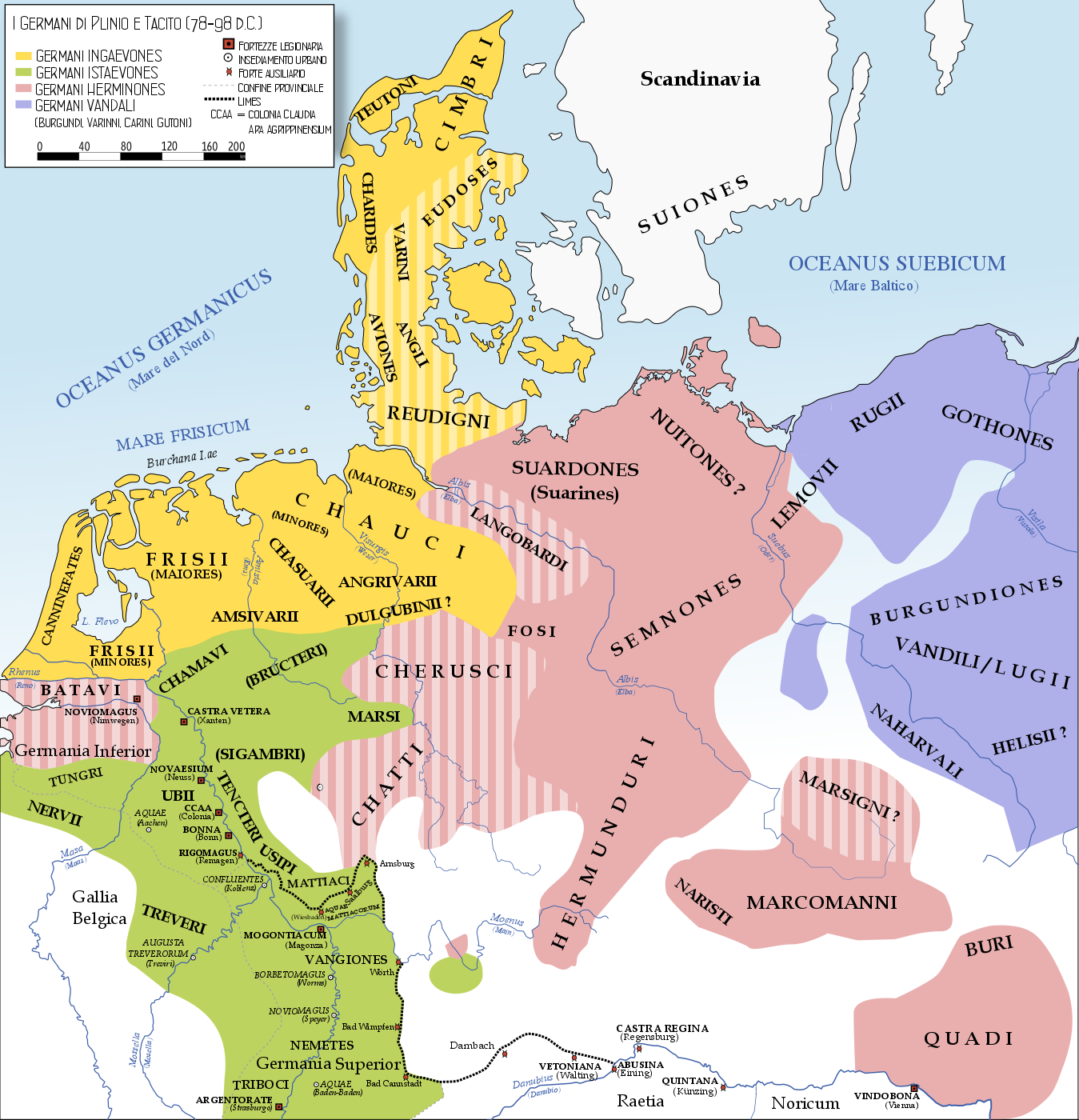
Odhinn is clearly the god of the First function, he is the sovereign and the father of the gods, however his is not an exclusively ordering figure, but who also embodies the dark, magical and terrible side of sovereignty [6]: he is also a wizard, a sorcerer-king able to use magic against his enemies in war, especially through the metamorphosis that allows him to transform into animals such as the crow and through the use of magical laces that entangle on the field to battle his opponents. He is also a soothsayer, connoisseur of the arts and poetry: not by chance writing and runes are considered elements subject to him.
All this explains a physical characteristic that distinguishes it, namely the loss of an eye, conceived as the necessary sacrifice that the god would accept in exchange for the acquisition of the prophetic art. In this sense Odhinn constitutes the perfect personification of a topos typical of Indo-European ideology: the paradigm according to which poetic creation would be direct inspiration of the divine and the poet, consequently, partakes of the divine nature insofar as dhiras "Seer" e kavis "Wise" [7]; think of Tiresias and Homer: blindness is a recurring attribute for fortune-tellers and poets, who receive in return a "superhuman sight". "The poet, like a god, does not need to question because as a poet, indeed, as a precondition for his being a poet, he is a dhiras, a seer who possesses in his heart, through the work of a god, the vision of the motives of his poetry>> [8]. The opposite of the poet dhiras is the pakas, who "is not the fool - as sometimes, erroneously, is understood - but the uninitiated, the one who, not making up for with his own intellect, being, in short, neither a god nor a poet, must" question "to draw the its to know from others>> [9]. The rest the Germanic name of the god, Wotan, is etymologically linked to Latin vates, in German rage ‹‹Fury››, in the Anglo-Saxon style woth ‹‹ Singing› ›and the Gothic wôds ‹‹ Owned› › [10].
Odhinn is also the god of rebirth: according to tradition, he underwent a ritual death by hanging - a detail that Dumézil considers a reflection of shamanic practices - in order to obtain the magical art of runes, hence his title of "Lord of the Hanged"; finally, as pointed out by Tacitus, Mercury / Odhinn is the only god who would demand human sacrifices, while animal victims are sacrificed to Mars and Hercules.
In short, Odhinn seems to be associated with a very broad spectrum of prerogatives and functions, not limited to a single specific area: "king of the gods and great magician, god of warriors and god of a part of the dead, not to mention the agricultural component sometimes taken from the folkloric uses of the great winter festival. Isn't that too much for one god, especially when you take into account that no other Ase or Vane has such a variety of action?>> [11]. This is the reason why there are those who have hypothesized that his is a more recent divine figure, born from the expansion of a divinity that originally would have had a more humble and restricted field of action. [12]. An argument used by some critics [13] against the antiquity of the divine figure of Odhinn is the problematic nature of its power over the runes, as the latter would only appear starting from the Christian era [14]: "From this fact it would result for the" god of the runes ", a terminus a quo after the Christian era and the massive influence of the Roman world on the Germanic one>> [15].
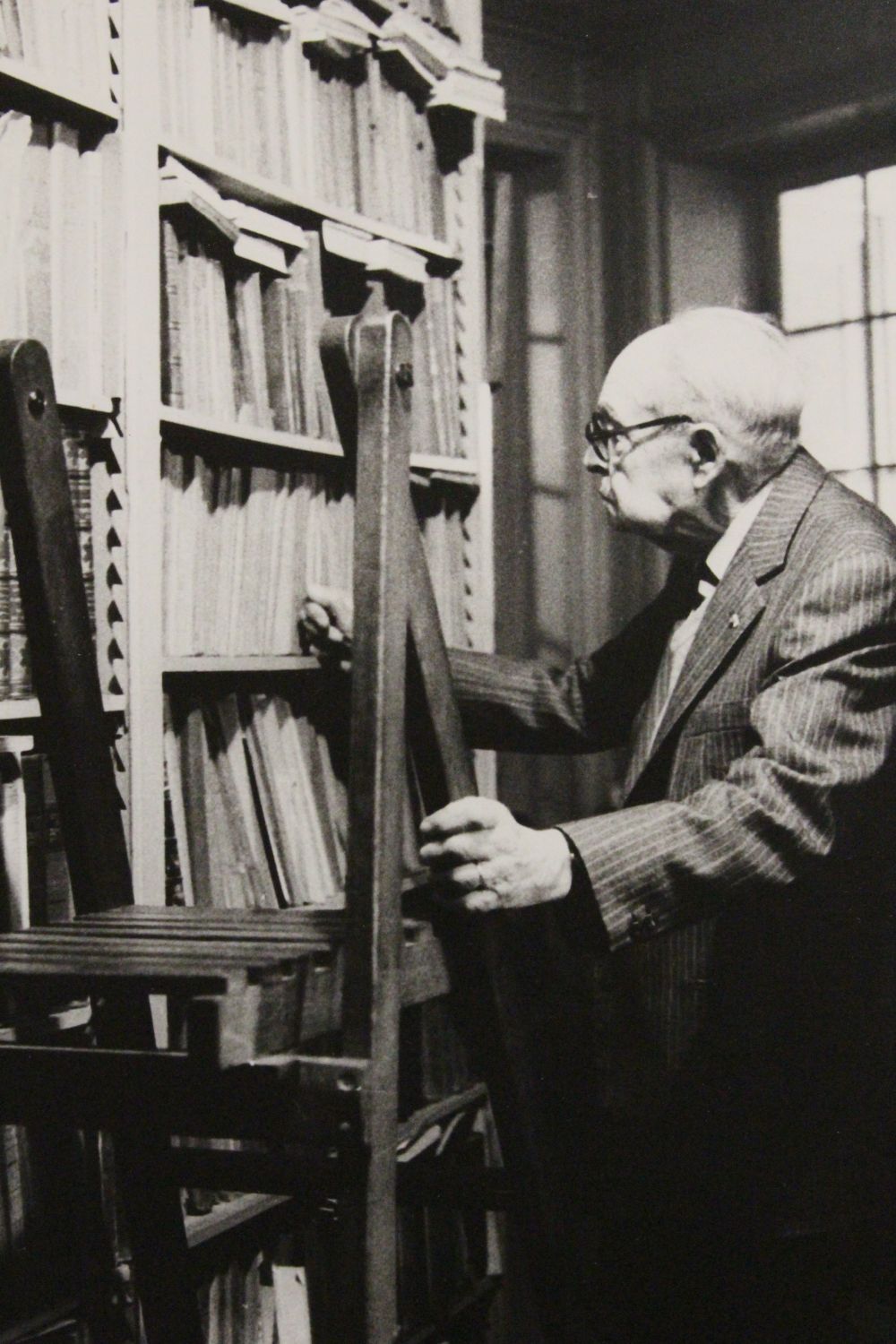
Dumézil, distinguishing himself from this interpretative line, states on the contrary the antiquity of the figure of Odhinn since "if Odhinn was the sublime magician from before, indeed always, it is well understood that the runes, however recent they may be supposed, have been recognized as his property: a new and particularly effective instrument of works magical, by definition they were indisputably part of the god's domain ››. According to the historian of religions, therefore the dominion over the runes would be a more recent prerogative of Odhinn, but associated with the latter precisely by virtue of his primal role as god of magic.
This consideration aims not only to reject the seriousness of the figure of Odhinn [16], but to also claim his descent from an archetypal divinity of the Indo-European religion, that is the "magician sovereign god ››, a figure inserted together with his counterpart, the "sovereign jurist god", in a binary system considered the foundation of divine Indo-European sovereignty.
To resolve the ambiguity of Odhinn's role in the Germanic pantheon, Dumézil uses the comparison with Vedic mythology, in which the First function - the level of sovereignty - is associated not with a single god, but with a pair of complementary and antithetical divinities: Varuṇa and Mitra. Varuṇa, exactly like Odhinn
"On the one hand he is, par excellence, the lord of Maya, that is, of illusionistic magic, creator of forms; on the other hand, materially and symbolically, since the RgVeda and also in the epic, it has as its weapon the knots, the laces, with which it grabs the sinner instantly and without the possibility of resistance; […] There are demonic affinities in him. ››
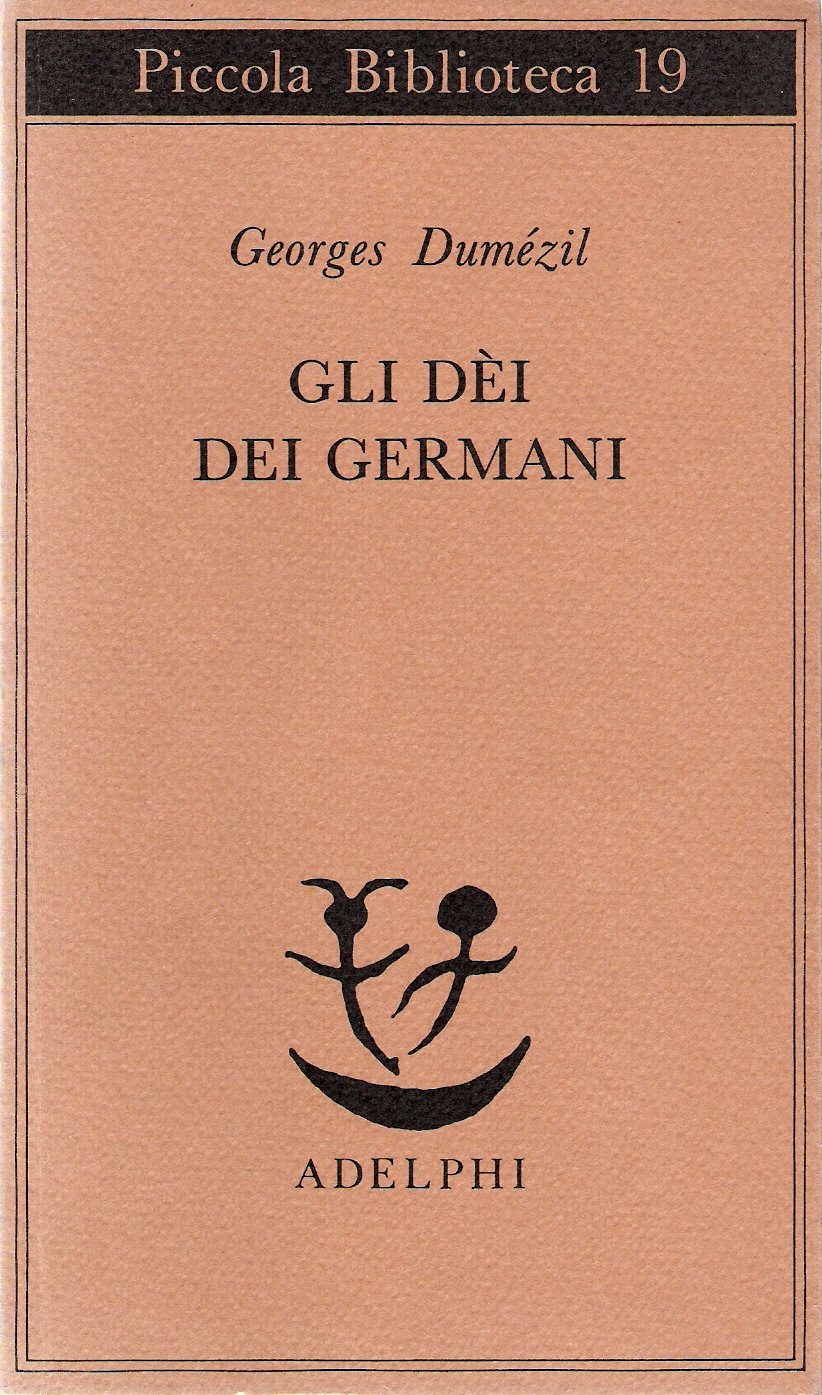
The god of magic is opposed by his complementary, the "sovereign jurist god ››, or Mitra, god of contracts and legal procedures; his very name has "a root which means" to exchange regularly, peacefully, amicably "(that of the Latin munus, communis, like that of the ant. Slavic mena "Exchange" e mir "Peace, order"), has no other meaning than contract>> [17]. Mithra is essentially the deified personification of contractuality, "the personified Contract.">>. The same duality of the sovereign function is found in Roman religion with Jupiter and Dius Fidius / Dea Fides and in the epic with the first two sovereigns of Rome: the difference between "the demigod Romulus, [...] beneficiary of the auspices and spectacular interventions of Juppiter ›› and ‹‹In, completely human, instigator of laws and devoted especially to the goddess Fides, expresses better the opposition and complementarity of the two equally necessary ways of sovereignty ››.
From these considerations Dumézil comes to a fundamental conclusion: if the bipartition of the way of exercising sovereignty is an identifiable trait in both Indo-Iranian and Roman cultures, this leads to the hypothesis that it is an aspect of the divine inherited from a common ancestor, or the Indo-European religion. But if the "jurist sovereign god" of the Indo-Iranian religion is Mithras and that of the Roman religion is the Dius Fidius / Dea Fides, in the Germanic pantheon to which figure is ascribed the complementary function with respect to that of the god-magician Odhinn? This is where another deity already known to Tacitus comes into play. The latter, after Mercury/ Odhinn ed Hercules/ Thorr, mentions Mars among the most revered gods among the Germans.
It's clear that Mars is the term of comparison with which the Romans read a figure foreign to their pantheon, Týr [18]. Tyr is a divinity of which the sagas hand down little information, but the fact that he was considered similar to Mars could superficially lead to classify him as a god of the Second function, a god of war. In reality he, more than the god of warrior conflict, seems to have been the god of legal conflict: it is no coincidence that the main story that has Týr as its protagonist it concerns a cheating against a son of Loki, the wolf Fenrir. The gods in fact, fearing the latter [19], they decided to tie him for eternity with a magic lanyard, making Fenrir believe that it was a challenge to test his strength. The wolf, distrustful, asked as a guarantee that one of the gods would put his hand in his jaws: only Týr he volunteered, thus losing his right hand.
In this way the god ascended to the role of guarantor in the processes, of divinity in charge of the juridical sphere in a totally negative vision of justice and law, "aimed not at the just reconciliation of one with the other but at the annihilation of one by the other>> [20]. Fenrir just before falling into the deception organized by the gods says [21]:
"I don't want to be tied up. However, rather than accuse me of lack of courage, one of you places his hand in my mouth as a guarantee that he is acting correctly. >>
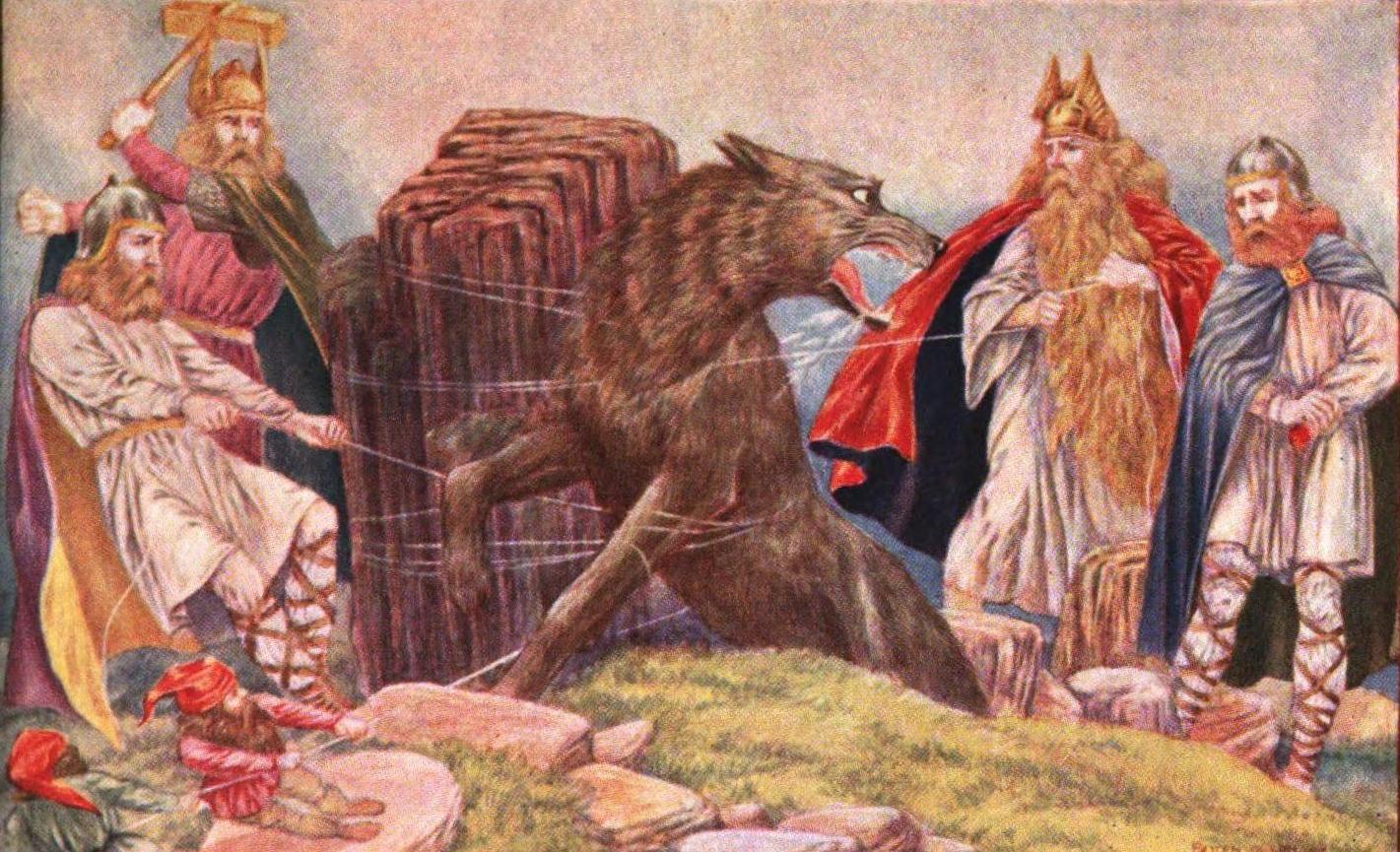
Moreover, precisely for this reason it is not surprising that Speaking of Týr, Snorri affirms that "he certainly cannot be called a peacemaker of men›› [22]: the legal sphere is viscerally connected to the conflict and by extension to the war itself, moreover "it is necessary to take into account the fact that, from the Germanic point of view, there is no contradiction between the concept of" god of battles "and that of" god of law ">> [23] since "well used, the law guarantees the equivalent of a victory, eliminates the less alert or weaker opponent". The domain on which Týr exercising his power as a sovereign god is therefore not war stricto sensu, but more latently the assembly, that is the battlefield in which two adversaries face each other, a field to which the juridical confrontation also belongs [24]. Tire it is certainly the deity who presided over the assembly [25]:
"Two inscriptions, at Housesteads on Hadrian's Wall in Great Britain, are dedicated to god Mars Thingsus (XNUMXrd century). This appellation goes without a doubt connected to the Nordic term thing, "Assembly". In addition, the Danish toponym Tislund "wood of Týr", which indicated the place where the assembly was held, should be remembered. >>
The link between judicial duel and war conflict is demonstrated by a Tacitian passage [26], in which the Latin historian recalls that the Germans would have used to express their assent in common assemblies by beating and shaking their weapons, the framee. "It is therefore not surprising that the god at the center of these juridical-warrior meetings, heir to the Indo-European jurist god, put on the uniform of his ministers and accompanied them in their easy and constant passage from justice to battle and that the Roman observers had regarded him as a Mars>> [27]. Tacitus already notes that war is such a priority for the Germanic peoples that it pervades every aspect of their daily life: ‹‹nihil autem neque publicae neque privatee rei nisi armed agunt››, ‹‹ they do not deal with any public or private business without being armed ››.
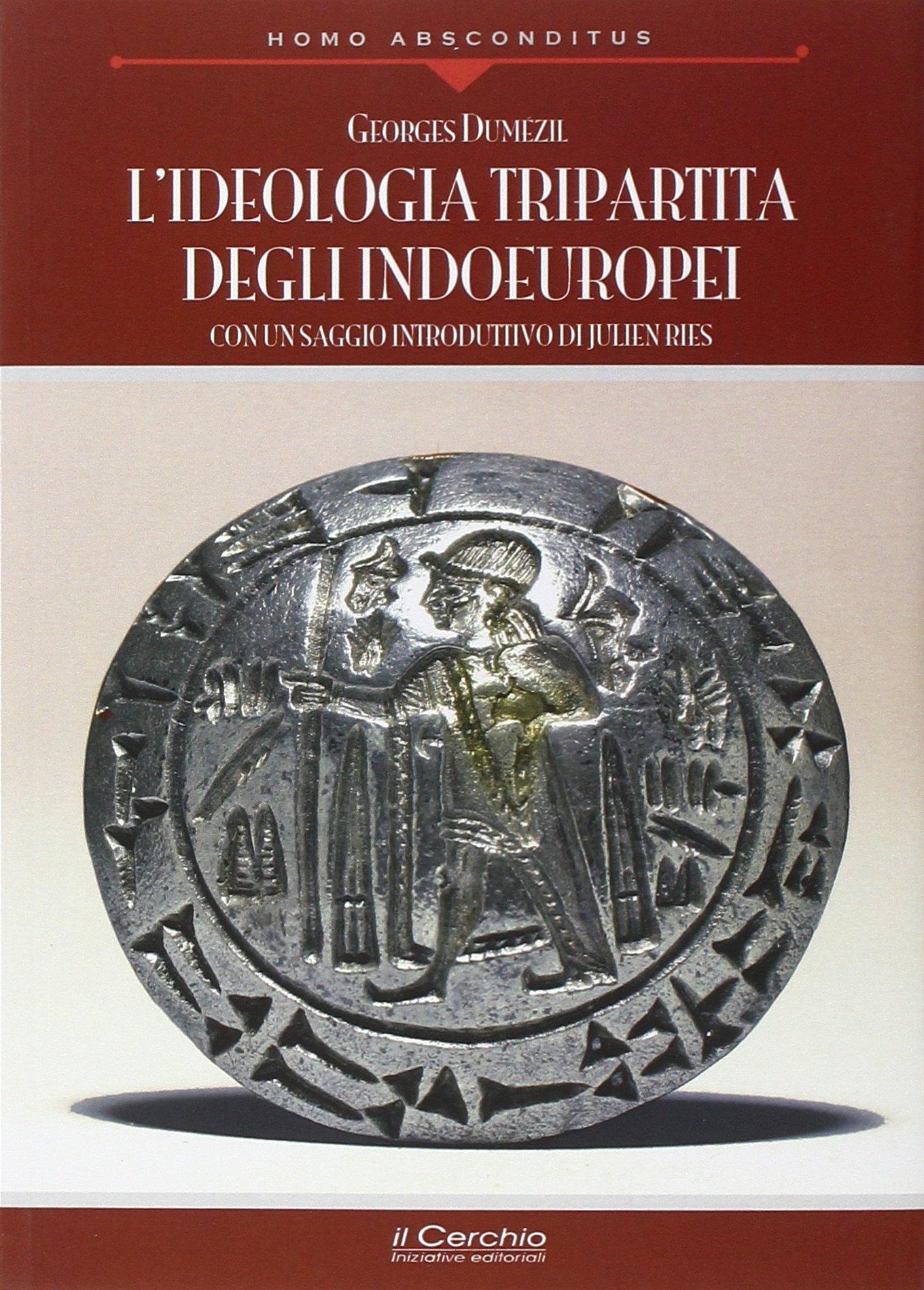
Unlike the Romans, they would have girded themselves with arms even in non-war contexts, as precisely in common assemblies that exercised a legislative and judicial function, precisely because their culture would have been devoid of a clear distinction between the warrior and the political sphere. , civic or religious [28]. From the Tacitian testimony it would appear that even the priests were not strangers to the war: they participated in the assemblies in arms ("[...] they sit down holding their weapons. The priests, who at that moment also have the right to punish, impose silence ››) and enjoyed powers in Rome granted only to commanders, in particular the right to punish and beat people guilty of some crime ("Besides, it is not permitted to condemn to death, or to put in fetters, or to beat anyone except priests ››).
The infiltration of war in every aspect of the life of the Germans is therefore also found in the sacral and religious apparatus, as the figure of Odhinn himself demonstrates. In fact, despite the numerous similarities between the Germanic god and Varuṇa, a big difference between the two is precisely their different relationship with the world of war: in the Indo-Iranian religion Varuṇa, despite being sometimes evoked in battle, is almost exclusively the god-magician , usually unrelated to warrior art (the god in charge of it is instead Indra), while it constitutes a sphere of fundamental competence for Odhinn.
In the Germanic pantheon, therefore, also the divinity of magic, divination and poetic genius acquires warlike connotations, indeed we are witnessing a real syncretism between the two areas of competence since Odhinn, not hesitating to go down personally on the battlefield, also uses magic to stun and terrorize his enemies [29]:
"The explanation of this peculiarity of Odhinn is evident: in the ideology and practice of the Germans, the war has invaded everything, colored everything. When they are not fighting […] they only think about future fights. […] How could the sovereign god […] not suffer, in his internal equilibrium, the effect of this hypertrophy of warlike concern? >>
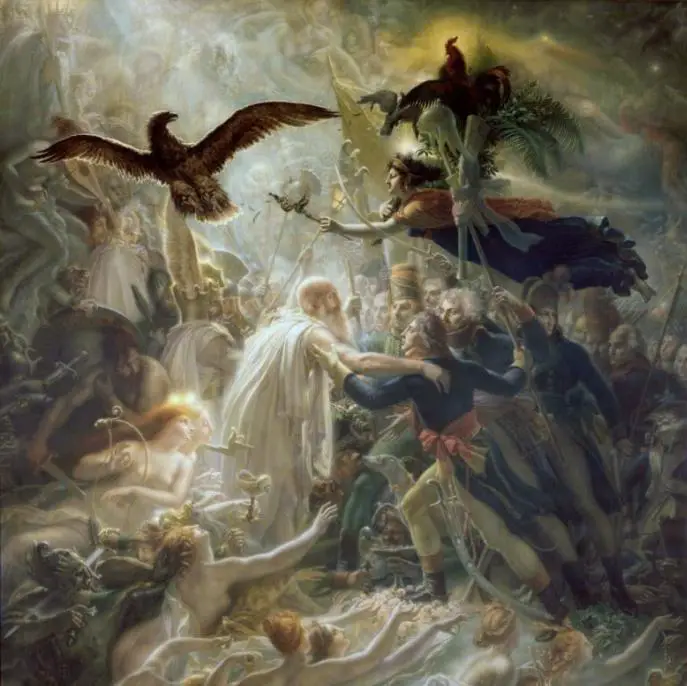
There is an underlying parallelism between Odhinn and Týr first of all as both gods of conflict, the first of the warrior and magical one, the second of the civic and legal one. Both are also gods voluntarily maimed and displaying a mark of initiation [30]: Odhinn sacrificed his eye to obtain the "superhuman sight" of prophets and soothsayers, he underwent a ritual of death and rebirth to gain dominion over the runes, all elements with which he rises to the role of "sovereign god magician>>; Týr on the other hand he gave up his right hand "in a fraudulent procedure of guarantee, of pledge, which qualifies him as a" sovereign jurist god "››.
The right hand (and by extension the handshake) is in fact the instrument by which agreements, contracts, alliances are sealed [31], so it is probably no coincidence that the Norse myth signals Týr's role as "jurist god" precisely by resorting to this symbology [32]: "The hand offered is a guarantee of sincerity, an act of availability and submission. The ceremony of the swearing of the pact of blood brotherhood provided for example that during the pronouncement of the vow, the contractors would take each other by the hand>> [33].
Just as Odhinn is the god of the magical laces that entangle enemies, so too are the legal quibbles subjected to the rule of Týr perform a similar function. In fact, the law creates "juridical ties" that oblige an individual to fulfill obligations towards another: it should be noted that in the Norse tradition the episode that best expresses the original role of Týr -- the cheating against the wolf Fenrir - it has as its emblem of the deception a snare, with which Fenrir is imprisoned.
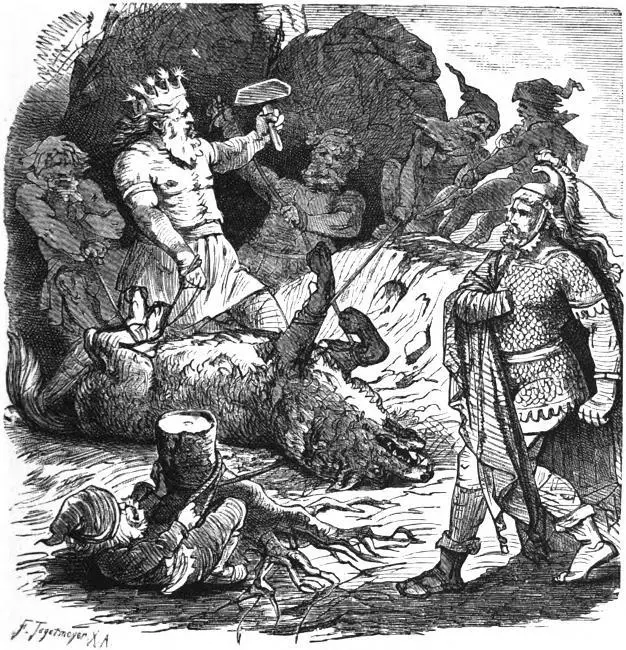
It is clear that the Germanic peoples did not have a complex legal apparatus like the Roman one. The system through which links between contractors were created was based on the practice of giving and hospitality: formerly Tacitus [34] note the great value assigned by the Germans to hospitality and the exchange of gifts, through which individuals, families or even entire villages sealed relationships of friendship and alliance. The gift was therefore the means by which this civilization regulated its relations, in the absence of an evolved juridical system; but due to the negative view of law that existed among the Germans (as Dumézil points out) the gift has a double value: it can be an instrument of alliance between two contractors, but it is also a bond, precisely a snare, which at the same time entails obligations. The gift, just like a noose, chains one person to another; accepting a gift means creating a bond with the donor e in ancient civilizations it was not only obligatory to accept the gifts offered, but this also entailed the obligation to reciprocate them [35]:
"[...] the pledge accepted allows the parties to Germanic law to act on each other, because one possesses something of the other, because the other, having been the owner of the thing, may have enchanted it, and because, often, the pledge, cut in two, was kept for half by each of the two contractors. But this explanation can be superimposed on another more appropriate one. The magic sanction can intervene, but it is not the only constraint. The thing itself, given and pledged, constitutes, by its own virtue, a bond. The pledge is mandatory. >> [36]
In the negative view of law, as it occurs in Germanic-Norse culture, the gift has an intrinsic danger as it creates bonds and obligations which, if violated, can lead to conflict and war: “The danger represented by the thing given or transmitted is certainly nowhere more felt than in the very ancient law and in the very ancient Germanic languages. This explains the dual meaning of the word gift in the ensemble of these languages, that is, gift, on the one hand, and poison, on the other. […] The theme of the fatal gift, the gift or the good that turns into poison is fundamental in Germanic folklore ››. Significant for Marcel Mauss are these lines from the poetic Edda, in which the hero Hreidmar responds to Loki's curse [37]:
"You have given gifts,
But you did not give gifts of love,
You did not give with a kind heart,
Of your life, you would already be deprived,
If I had known of the danger. >>
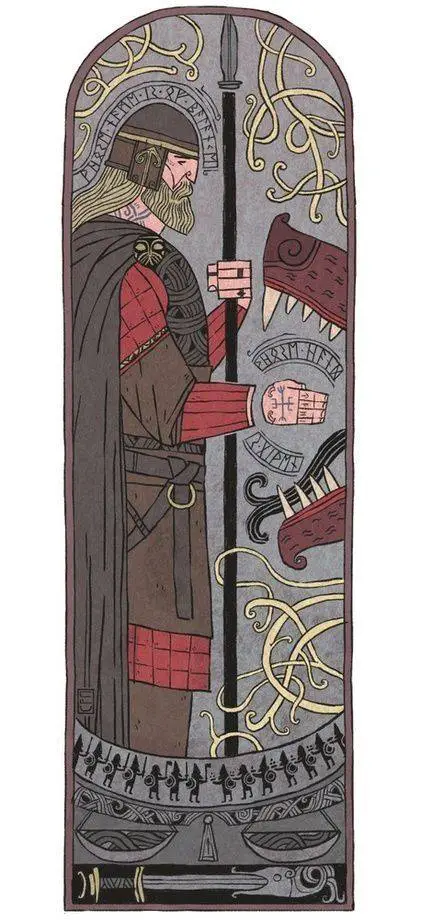
All this explains why Týr, the "sovereign jurist god" of the Germanic pantheon, is remembered as a "non-peacemaker of men" and was so closely linked to conflict and war, so militarized that he was read by the Romans as a Mars: "it seems that, less hypocritical than other peoples, the ancient Germans thus recognized the profound analogy between the procedure of law - with its maneuvers and its tricks, with its unquestionable injustices - and armed combat>> [38].
Although Tacitus already suggests a subordination of Týr than Odhinn [39] (Týr /Mars in fact it is not associated with Odhinn /Mercury, but it is on a lower level together with Thorr / Hercules), On the contrary, Dumézil believes that originally they were both sovereign gods linked to the First function, precisely by virtue of the complementary bipartition that constitutes the first level of the Indo-European religion. The evolution and affirmation of Odhinn in Germanic mythology would have caused Týr's downsizing and subordination over time [40], originally an extension of the Indo-European "jurist god" and therefore equally necessary for the correct governance of humanity; the same phenomenon can be found in Roman theology, where archaically Iuppiter and Dius Fidius constituted separate entities, until the function and personality of the second were absorbed and incorporated into the predominant figure of the first. Moreover, this phenomenon is explained by Dumézil through the awareness according to which "Reassuring gods are of less interest to men than disquieting gods ››.
The Indo-European religious ideology would ultimately be founded - at the level of the First function - on one complementary bipartition of two divine figures, one representing what is beyond the reach of the human, what is superhuman, secret and obscure; the other instead personification and divinization of a dialectic well known to men - and indeed strictly human -, the contractuality that can turn into conflict. The world, in order to achieve its own equilibrium, would need a collaboration between the two figures, between magical sovereignty and juridical sovereignty, between a "term varunic›› and a ‹‹ term miter››: "The sovereign administration of the world" is ultimately divided "into two great provinces, that of inspiration and spell, that of contract and procedural quibble, in other words magic and law ››.
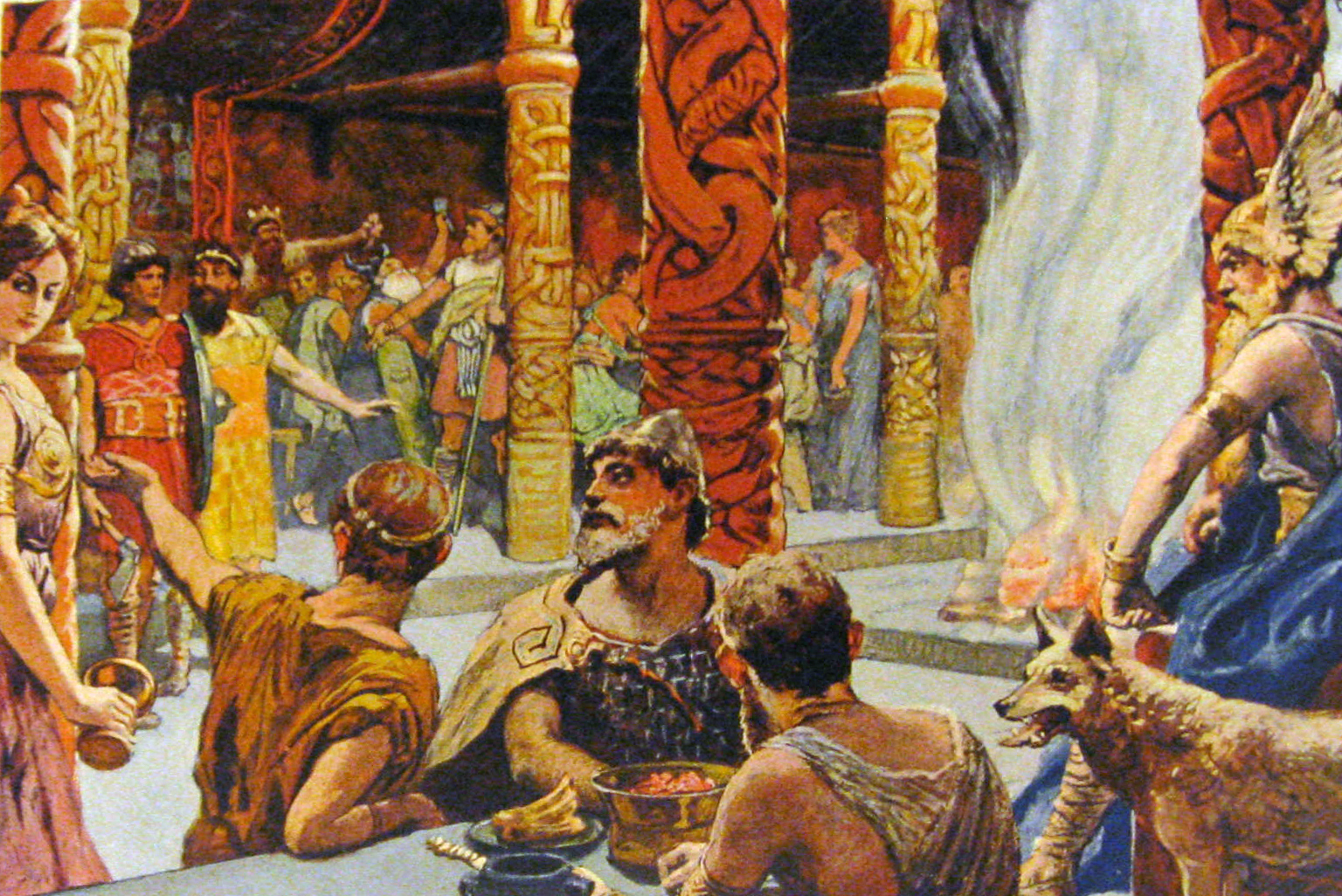
Note:
[1] THEPoetic Edda (XNUMXth century) and theEdda in prose (drawn up between 1222 and 1225) by Snorri Sturluson, for more information see Isnardi Church, The Nordic myths, pp. 677-685. Since these are recent texts, it is likely that the material collected there is manipulated and influenced by other cultures, such as Celtic, Latin and Christian.
[2] Actually already in De bello Gallico Caesar had had the opportunity to mention the religion of the Germans, stating that they would be devoted to three main divinities: Sun, Moon and Vulcan; moreover, according to Caesar, the Germans would not have had real priests. This information will be corrected and expanded by Tacitus.
[3] Germany IX 1-2.
[4] Germany XLIII 4: <<Praesidet priests ornatu muliebri, sed deos interpretatione Romana Castorem Pollucemque memorant. Ea vis numini, nomen Alcis>>.
[5] Odhinn would take the souls of noble men with him to the afterlife, Frejya those of women and Thor those of the non-notables, vd. Dumézil, The gods of the Germans, pp. 18-19.
[6] Isnardi Church, op. cit., p. 218.
[7] In the RgVeda the poet is called precisely dhiras "Seer" e kavis "Wise"; see RV I 145 and RV I 164,6.
[8] Lazzeroni, P. 99.
[9] Ibid, pp. 96-97. To learn more see Lazzeroni, pp. 96-103: "<<Dhiras he is the one who does not ask why, like a god, he derives his own knowledge from himself with an autonomous process of knowledge. […] The comparison with the poet-seer of the god who is himself a seer means that the poet participates in the divine nature. [...] Poets have an inner eye that allows this vision: the designation of the poet as a "seer" alludes to this with etymological transparency: dhiras. Visions arise in the heart and are converted into poetry by means of the intellect ››. Of the resVd. also next note.
[10] See Scarpi, pp. 92-104.
[11] Dumézil, op. cit., p. 67. See also Scardigli, Germanic Philology. Introduction to the history of Germanic language communities, p. 69: "Odin is the greater divinity, the same denomination of him" father of all "(norr. al-födhr) in the Nordic world gives us proof. He himself wise (if the etymology is correct, the meaning to be given to the name of the god would be "the possessed" [...]) makes others wise and inspires poetry in them. But he is also a warlike god: valfödhr "Father of warriors who died in battle" e herfödhr “Father of the army” is called in the Edda ››.
[12] "According to some, the god was at first just a small household god, or a small sorcerer god; according to others, a god of the dead; according to still others, a god of fecundity ››, Dumézil, op. cit., pp. 67-68.
[13] Dumézil mentions the Swedish archaeologist Oscar Montelius (1843 - 1921).
[14] Although Dumézil is quite generic here, it is likely that by "Christian era" he means the late Roman imperial period, since the first runic attestations date back to the II-III century AD; when Christianity reaches the northern regions, the Latin alphabet will spread, even if the runes will still be preserved in pagan cult environments. It is considered plausible that the runic system has its origins in an era prior to the II-III century AD. C. since it derives from more ancient alphabets such as Etruscan (see the helmet of Negau). Furthermore, Tacitus himself (Germany X) mentions the existence of particular "signs" used by the Germans for divination practices, but it is debated whether these signs are to be understood as an allusion to real runes or as less complex iconographic symbols. See Scardigli, op. cit., pp. 61-65.
[15] Dumézil, op. cit., p. 66.
[16] The question is still open today. Chiesa Isnardi also seems to lean towards the idea of a more recent introduction of Odhinn into the Germanic pantheon: "although it seems probable that his cult (of Odhinn) spread in a relatively late period, he nevertheless soon earned the position of supreme god and as such overwhelmed other gods of the sky once very important such as Tyr and Ullr ››, Chiesa Isnardi, op. cit., p. 199.
[17] "It is a question, as A. Meillet said in an epoch-making article (1907), not a natural phenomenon, but a deified social phenomenon; more precisely, a type of juridical act is deified together with the effects it produces, the state of mind and fact that it establishes among men ››.
[18] Note that "Tuesday" in Old Norse is "tysdagr", vd. Isnardi Church, op. cit., p. 217. Týr he is "a divinity that etymologically corresponds to the Indo-European god-light Zeus, Jupiter, Dyauh. It looks like Teiw- in the inscription of the Negau helmet […]. Traces of the Indo-European tendency to make the god-light the god par excellence are reflected in the noun norr. you, used mostly in the plural tivar in the sense of “gods” ››, Scarpigli, op. cit., p. 70.
[19] It was in fact foretold that at the end of the world, in the time of ragnarok, Fenrir would defeat and kill Odhinn.
[20] Dumezil, op. cit., p. 86.
[21] Snorri, Edda in prose XXXIV. In the twilight of the gods, at the end of the world, it is written that Týr he fights the dog Garmr, who probably represents a form of Fenrir, who instead is destined to defeat and kill Odhinn. This "would therefore only be the final outcome of an enmity born when the wolf Fenrir had cut off the hand of the god", Chiesa Isnardi, op. cit., p. 191.
[22] Snorri, Edda in prose XNUMX
[23] J. De Vries, Altgermanische Religionsgeschichte, I, 1935, pp. 173-174.
[24] "The identification with the Roman Mars is probably the result of a shift by Týr towards the dimension of war. However, he is not the god who fights, but the one who guarantees order in war, the rules of the game and of force ››, Scarpi, p. 101.
[25] Isnardi Church, op. cit., p. 217.
[26] Germany XI-XIII. "A few centuries later Scandinavian antiquity does not show us a different spectacle: even there we gather in arms, we approve by raising the sword or ax or beating the sword on the shield ››, Dumézil, The tripartite ideology of the Indo-Europeans, P. 92.
[27] Dumézil, ibid.
[28] "" In Rome theexercitus urbanus which constituted the legislative assembly, met at the Field of Mars but without weapons ››, Dumézil, ibidem. Indeed in the Roman world it was not possible to cross the pomerium and enter the capital armed, otherwise one would automatically become enemies of the state. However, it is also necessary to take into account any Tacitian deformations and manipulations: in several cases it is probable that the Latin historian has referred to the model of inverse symmetry, through which barbarian peoples were often read in the ethnographic tradition since Herodotus. It is therefore likely that Tacitus voluntarily amplified differences found between the lifestyle of the Germans and that of the Romans.
[29] Dumezil, The gods of the Germans, pp. 80-81.
[30] "Mutilation is a mark of initiation, a sign of possession of celestial secrets, of the sacrifice of a material attribute in exchange for superior knowledge or a cosmic benefit", Chiesa Isnardi, op. cit., p. 444.
[31] See the recurring Latin expressions: anoint dextras "Shake hands as a sign of friendship", dextras renew "Renew the alliance", alicui manum adire "Deceive someone".
[32] Scarpi sees an affinity between Týr's story and that of the Roman Muzio Scevola, "the left-handed", who burned his right hand after having failed in his attempt to assassinate Porsenna (think of the expression "putting his hand on fire"). Also in the legend of Muzio Scevola there is trace of a deception carried out by this character against the Etruscan king, who was pushed by Scevola to enter into peace negotiations with the Romans.
[33] Isnardi Church, op. cit., p. 608.
[34] Germany XIII, 5: members of a committee particularly prestigious were requested by other Germanic peoples by offering gifts to resolve their conflicts; XIV, 4: also the relationship within it committee between princeps and committees it was regulated on the basis of the liberality of the former, through gifts and meals offered to one's companions; XXI, 2-4: the importance assigned to hospitality and the exchange of gifts is described here in general.
[35] "These services and counter-performances are intertwined in a form, preferably voluntary, with gifts and presents, although they are, in the end, strictly obligatory, under penalty of private or public war. [...] The obligation to receive it is no less strong. There is no right to refuse a gift, to refuse the potlac. Acting in this way is equivalent to admitting that you are afraid of having to reciprocate, it means being afraid of being "annihilated" until there has been restitution ››, Mauss, Essay on the gift.
[36] Ibid.
[37] Poetic EddaReginsmal 7.
[38] Dumezil, The tripartite ideology of the Indo-Europeans, P. 92.
[39] See note 12.
[40] "By attenuating, dampening what constituted his originality and his raison d'etre next to the" magician god "and excessively developing a military aspect, the" jurist god "has almost lost his place at the first level and also very much soon ››, Dumézil, The gods of the Germans, P. 90.
Bibliography:
G. Isnardi Church, The Nordic myths, Longanesi 2008.
G. Dumezil, The gods of the Germans, Adelphi 1974.
G. Dumezil, The tripartite ideology of the Indo-Europeans, The Circle 2015.
R. Lazzeroni, "The Indo-European culture", Laterza, Bari 1998.
M. Mauss, Essay on the gift, Einaudi 2002.
P. Scardigli, Germanic Philology. Introduction to the history of Germanic language communitiesSansoni 1964.
P. Scarpi, "Celts and Germans", in "Manual of the history of religions" (edited by C. Filoramo, M. Maxenzio, M. Raveri, P. Scarpi), Laterza, Bari 2011.
Snorri Sturluson, Edda in prose, Adelphi 1975.
Tacit, Agricola's life. GermanyBur 1990.

Good morning,
with regard to the etymological connections linked to Wotan, is there a documentation that takes into consideration the strong assonance with the original form of the perfect with present function οἶδα, that is * Ϝοἶδα?
Correspondence that is noted especially in the second person singular where the archaic ending "-θα" remains, therefore, * Ϝοἶδθα and which recalls not only the name of the god, but also his characteristics as a seer and sage ("I know, because I view").?
The hypothesis is perhaps a little daring, but also partially supported by the clear Indo-European matrix of the verb which preserves the apophony well intact.
Good afternoon,
your observation seems plausible to me. I have consulted various etymological dictionaries: Etymological Dictionary of Greek, Chantraine, Ernout Meillet, Pokorny and Lehmann. It seems that the perfect οἶδα is connected to the Indo-European root * w (e) id, from which the Sanskrit véda, the Latin video and the Gothic wait 'to know' and witan 'to observe' would also derive. The Gothic weitwoths 'witness' is also connected to the participle εἰδώς. It is therefore a sphere of terms referring to sight and by extension to knowledge. However Pokorny and Lehmann connect the names Woden, Wuotan and Odhinn to the Indo-European root * wat / * wot 'spiritually excited', from which the Latin vates and the Gothic wods 'possessed' and woth 'song, sound, voice' would also derive.
It would therefore be a question of two different roots, but which seem semantically similar, precisely by virtue of the Indo-European ideology for which the poet is also a seer, wise and participant in the divine nature. Furthermore, Odhinn's initiation based on the loss of an eye closely connects it to the sphere of 'seeing and therefore knowing'. I therefore do not think it is a daring approach to hypothesize.
Good evening,
thank you very much for the thorough reply.